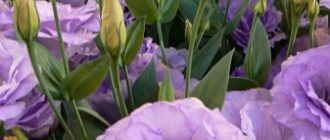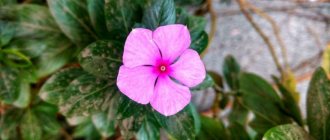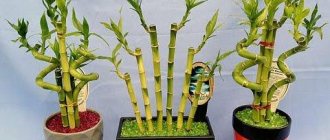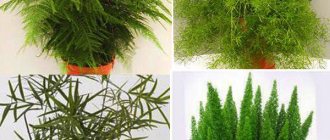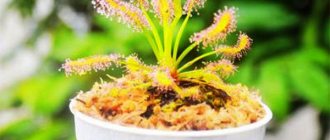Description of the plant
Eustoma is a very beautiful decorative flowering indoor plant of the Gentian family. These flowers are still often found in the southern regions of Mexico, in the south of North America and the north of South America, on the islands of the Caribbean. Eustoma is translated from Latin as beautiful mouth.
An American Indian legend says that Eustoma first bloomed on the grave of an innocent girl who refused reciprocity to the God of War and was killed by him for this.
This wonderful flower was discovered for Europeans by the Irish doctor and botanist Patrick Brown. Under natural conditions, it is a biennial herbaceous plant with an erect stem up to 60 cm high. The leaves are whole, large, greenish with a bluish tint. Flowers are bright, blue, single.
Cultivated varieties of Eustoma appeared relatively recently. They, unlike wild species, have flowers of different colors. This is the merit of numerous breeders. Varieties with two-color colors and double flowers appeared. New varieties are being actively developed by breeders in Japan and the USA. Their Eustomas no longer look like bluebells from the wild prairies.
The appearance of the bush and its flowers, of extraordinary beauty and grace, conquer the hearts of flower growers. The tall, stable stem, similar to the stems of another flower - the carnation, has an elegant shape and is strewn with green leaves with a bluish tint, with a slight waxy coating on them. Somewhere, from the middle of the length of the bush, the stem begins to branch. During flowering, each bush gains from 30 to 35 buds and looks like an unusually beautiful bouquet.
Bicolor eustoma
The buds open alternately, one after another, and stay on the stem for a long time. The flowers, reminiscent of roses in shape, have a large, funnel-shaped, deep cup. Their petals are colored, depending on the variety, in different colors. Eustomas are snow-white, blue, yellow, pink, lilac, purple, violet, lilac, dark burgundy. It is impossible to list all the colors that nature has given to this extraordinary flower!
There are bicolor Eustomas with simple or double flowers. Only about 60 varieties are known. More than half of them are tall species for growing in the garden. At home, low-growing varieties of Eustoma are usually grown as a houseplant.
Growing conditions
Caring for eustoma requires careful care, as it is a rather finicky plant. This is partly due to the characteristics of the root system: it is highly branched, and the tissues are soft and vulnerable. If you damage the roots, they will quickly become infected with fungus or bacteria. The plant may die.
Because of this, they try to grow seedlings in wide cups or pots, and replant them by transshipment - together with a lump of earth, so as not to injure the roots.
Constant monitoring of soil moisture is required so that the soil does not dry out. The plant also does not like stagnant water - the roots can rot. The best option for Irish roses is a dosed drip irrigation system.
Light
Eustoma (lisianthus) prefers well-lit areas of open ground or a window sill on the southeast or west side. The lighter the flowerbed, the longer the flower stalks last. If you plant two types of eustoma, you need to make sure that the tall ones do not shade the short ones from the sun's rays, otherwise the latter will bloom worse.
On the windowsill in winter, the plant feels a lack of light, since the days are short. Therefore, lisianthus is extended daylight hours by installing additional lighting so that chlorophyll production does not stop and chlorosis is not observed.
The optimal temperature for seedlings is 25 degrees. Stronger plants are able to tolerate higher temperatures.
Video: Eustoma from A to Z - a complete guide to growing
The soil
Particular attention should be paid to the type of soil for eustoma: it should have a slightly alkaline reaction. Therefore, if the site has acidic or slightly acidic soil, it must be properly prepared by adding wood ash, compost, dolomite flour or lime.
On sandy soil or sandy loam, fertilizing is done more often, but in smaller volumes, since it quickly passes through the top layer and goes deep into where the roots cannot reach.
The most suitable type of soil is black soil with a lot of humus. On other types of soil, the plant requires organic fertilizing in the form of humus or purchased humic fertilizers. The most consumed nutritional component is potassium, as it is necessary for lush flowering. The growing season is long, so you will have to fertilize the soil every week.
Varieties
Low-growing varieties of Eustoma include:
- Eustoma Riddle is a low compact bush, reaching 20 cm in height. Blooms profusely with double light blue flowers.
- The Mermaid variety is a miniature compact species of Lisianthus, the crown height of which does not exceed 15 cm. It does not require pinching. This hybrid blooms with simple flowers with a diameter of up to 6 cm in a variety of shades: white, light pink, lilac and blue.
- Little Bell is a densely branching bush of miniature size, reaching a height of 15 cm. The flowers are small, simple, funnel-shaped, of all kinds of colors. This variety is valued for its abundant, long-lasting flowering. You don't have to do pinching.
- Eustoma Fidelity is a low indoor plant, no higher than 20 cm in height. It is distinguished by a multitude of snow-white small flowers, which are arranged in a spiral on the flower arrow.
- Variety Tenderness is a beautiful bush with an elegant stem up to 20 cm, on which satiny petals are arranged in a spiral. Blooms with pink flowers.
- The Little Mermaid has very small bushes, up to 15 cm in height, blooming with white, light blue or pink flowers.
- Eustoma "Florida Blue" - characterized by abundant blue flowers.
- Variety Florida Pink - this very beautiful, low indoor flower blooms profusely with light pink flowers. In a pot it looks like a bouquet with wonderful miniature roses.
This may be interesting: Reproduction of anthurium (male happiness) at home
Little Bell Mermaid The Little Mermaid Fidelity Florida Blue Florida Pink
In addition to low-growing ones, flower growers also practice growing tall indoor Eustomas:
- Eustoma Cinderella - bush height up to 50 cm. Blooms with double flowers of delicate pink or yellow color.
- Variety Twinkie - stem height is not higher than half a meter. It blooms with white, yellow, pink or purple flowers of extraordinary beauty.
- Eustoma "Mariachi Lime" - the height of the bush reaches a meter. The flowers on it are double lime-colored.
- Echo is a medium bush, grows up to 70 cm in height. Flowers of pink, yellow, lilac or white are displayed on a strong stem.
Twinks Mariachi Lime Echo
The most popular Eustoma varieties for growing at home are large-flowered. Their inflorescences consist of many large beautiful skirt-shaped flowers of the most impossible colors: snow-white and purple-red, violet and lilac, lilac and light yellow, blue and light blue.
Greenhouse cultivation for sale
Lush flower stalks of different shades and the ability to stand in water for a long time after cutting distinguish eustoma from the same roses that wither after a couple of days. The flower business is the main buyer of expensive seeds from Dutch producers.
Flowers are suitable for decorating restaurant tables with small bouquets of low-growing plants and creating flower arrangements for holidays. In order for flowers to generate income, you need to grow them in a greenhouse: prepare seedlings in the fall, and sell ready-made flowering specimens - potted or garden - by summer. There are many options for business:
- indoor eustomas;
- garden species;
- seeds of any one type or several;
- decoration of the halls;
- retail or wholesale sale of cut flowers.
The most difficult thing to maintain in a greenhouse is the required humidity in summer and temperature in winter. In addition, experienced gardeners point out the need for constant ventilation. This can create problems as cold air affects crop growth.
In addition to the microclimate, it is important to maintain an alkaline or neutral soil index so that the plants can feed according to their needs. A problem may arise with the absorption of phosphorus, which lisianthus consume in large quantities during the flowering period.
The fact is that all mineral phosphates dissolve in a slightly acidic environment. Eustoma requires neutral or slightly alkaline soil. This means that the soil must contain a lot of organic matter containing beneficial soil bacteria that break down phosphorus.
You can create diffused light in a glass greenhouse by whitewashing the walls with chalk or lime. This will be an additional disinfection measure against mold spores penetrating everywhere. The seedlings will feel better due to the lack of direct sunlight.
Caring for Eustoma at home
Indoor lighting
The place for the pot should be chosen on a well-lit, preferably southern, windowsill. But in the hot summer, the plant must be protected from direct sunlight - the lighting should be diffused to avoid burns to the delicate petals and leaves. Lisianthus is a long-day plant. In winter, it should be illuminated for at least 12 hours with fluorescent lamps.
Growing temperature
This flower loves warmth; its growing temperature should not be lower than 20 degrees. and above 24 gr. Celsius. At this temperature, Eustoma will bloom every year, and at an average room temperature of 27-30 degrees. Celsius, the flower will grow like a biennial plant - it will form buds in the first year and bloom the next year. At a constant low temperature, below 15 degrees. Celsius, the flower will slow down its growth, stop developing and may get sick.
Soil composition
Purchased soil for flowering Saintpaulias (Violets) is well suited for the soil. Good drainage is required. If you want to prepare your own soil mixture for growing Eustoma, mix equal amounts of garden soil, coarse river sand and humus. Add a little lime. It is necessary to monitor the pH (acidity) level of the soil. It should be within 6.5 – 7.0. More acidic soil can lead to zinc toxicity and the plant will slow down its growth. For normal growth of indoor Eustoma, regular ventilation of the room is necessary and important.
This may be interesting: Passionflower - types and varieties
Watering
Lisianthus is not often watered with warm, settled water, as the top layer of soil dries 2 cm. There is no need to spray the flower so as not to provoke the appearance of pests and diseases.
Top dressing
Eustoma loves to be fed during active growth and the appearance of numerous buds. Suitable fertilizer for decorative flowering indoor plants or any liquid fertilizer for indoor flowers. Read instructions for use on the packaging. More often it is 10 g - 15 g. fertilizers in a bucket of warm, settled water.
Eustoma bloom
Eustoma blooms in January-February, and for a long time and abundantly. The flowers bloom in turn, one after another. Don’t forget to pick off faded buds and dried leaves so that the flower always looks neat and decorative. When the flowering of the home rose ends, its dormant period begins. The plant is pruned, leaving only part of the shoots with a couple of internodes. The pot with the flower is transferred to a cooler room - with a temperature no higher than 15 degrees. Celsius, water less often and do not feed.
After a couple of months, with the arrival of spring, new leaves begin to appear on the bush - then our sissy, Eustoma, is returned to its previous warm, bright place, watering and fertilizing are resumed. Very soon your pet will grow new leaves and buds. Once again you will be enchanted by its colorful blooms.
Garden Lisianthus - features
Usually you can find annual or biennial eustoma seeds on sale (they are also perennial). Most often, the lisianthus flower is grown as an annual plant, since it is difficult to preserve in frosty winters. Its root system is fibrous and located in the top layer of soil, which freezes the most. The stems also cannot withstand severe frosts, even under mulch in open ground.
Garden tall species are best bred and grown as perennial crops in greenhouse conditions. In suitable conditions, the inflorescences can last up to 2 months if they are not cut off.
Reproduction of Eustoma
Reproduction of indoor Eustoma occurs only with the help of seeds. Reproduction of Eustoma by cuttings, layering and dividing the bush is not possible.
Growing Lisianthus from seeds
Growing Eustoma begins with purchasing quality seeds.
If you are going to use the seeds of your faded plant, keep in mind that they only become suitable for planting after a year .
You can plant seeds for growing Eustoma at any time of the year, but it is better in June-July, so that by autumn the bush will form and bloom profusely and colorfully in winter. Quite a long time passes from the moment the seeds are planted to the start of flowering.
Eustoma seeds
Eustoma's seeds are very small - there are more than 10 thousand of them in one gram. Therefore, it is better to purchase Eustoma seeds in special capsules, in which a nutritious mixture of peat, sand and fertilizer are balanced for maximum effective seed germination. Place seed capsules in prepared, well-moistened soil (in a pot or container) at a distance of at least 5 cm from each other. Cover with transparent film. Place in a warm, bright place to germinate seeds.
You can also purchase the seeds in yeasted form. There, several seeds are placed in one ball with a nutrient mixture. It is convenient to sow such peas as described above. Or you can plant Eustoma seeds for seedlings in peat tablets. The container with tablets maintains the necessary humidity and temperature, it is convenient to ventilate, it is clearly visible how the seeds germinate and the seedlings develop.
Yeasted eustoma seeds
If you decide to plant your seeds for seedlings in a container or container with nutritious soil, a mixture of sand and peat in equal parts is suitable for you. Place the seeds on the surface of moist soil and press them lightly. Cover the container with transparent film or a lid.
This may be interesting: Catharanthus - care and propagation at home
The first shoots will appear no earlier than in 2-3 weeks. The soil should not be too dry or too wet. It is better to moisten the soil after the first shoots appear in the morning - there is a risk of blackleg disease. To prevent the disease, you can spray Eustoma seedlings with a solution of foundationazole - 1 tsp. for 1 liter of warm water. When the sprouts begin to sprout, begin to accustom them to new conditions - open the film more often for ventilation, reduce watering. Spray with Zircon or Epin for rapid growth of sprouts, since in the first months Eustoma grows very slowly.
Growing Eustoma in peat tablets
Only after a couple of months, when the seedlings have grown a little, can they be transplanted into separate pots. It is necessary to replant by picking up the sprout along with a lump of earth, trying not to damage the fragile roots of the tiny bush. If the seedlings are sitting in a peat tablet, carefully remove the tablet from the shell and place it in a container with prepared soil.
Transfer
Although Lisianthus is a perennial flower, it does not tolerate transplantation; try not to disturb its root system without good reason.
Growing from seeds
To see these beautiful flowers on the windowsill, you need to get quality seeds. The following varieties are well suited for indoor conditions:
- "Rosie"
- "Mermaid";
- "Florida Pink";
- "Sapphire";
- "Little Bell"
It is better to purchase seeds from a trustworthy manufacturer.
It is advisable that they be placed in a special gel, which stimulates seed germination and increases their germination percentage. The best soil for eustoma is a commercial mixture for violets. Flower growers who prepare their own substrates prefer peat and sand or peat and tree bark in the same ratio. The pot should be shallow but wide, since the plant does not have a very developed root system.
Expanded clay pebbles must be placed at the bottom, which will serve as a drainage layer. Drainage is needed to drain excess water from the pot to prevent the roots from rotting. Soil is laid on top of the expanded clay and seeds are sown on it. You can also use special peat tablets, which need to be soaked in advance, and then sow seeds in them.
The seeds are placed on the soil without deepening them, then they are sprayed with water and covered with a transparent film or glass. The containers are placed in a shaded place so that they are not exposed to direct sunlight. The ambient temperature should not fall below 20 degrees Celsius.
If the soil begins to dry out, it should be sprayed with water from a spray bottle. Don't forget about daily ventilation. Every day you need to remove the film for 15 minutes to prevent mold from forming. After a week, exposure to air can be increased by 10 minutes and gradually increased to three hours.
To wait for the first shoots to appear, you need to be patient. Seeds usually germinate within two weeks, but it all depends on the conditions. Sometimes the first shoots appear even after a month. Immediately after this, the film is removed and the soil is sprayed with a solution of phytosporin.
Plants are planted in separate pots at the stage of appearance of two true leaves. Usually about two months pass until this moment. Place drainage at the bottom of the pot, then soil and carefully, without touching the roots, replant the flower. If you sow the seeds in February, the flowers will appear in late autumn.
Diseases
Of the many diseases of indoor plants, the most dangerous for Eustoma are the following: fusarium, powdery mildew, gray rot and blackleg.
Powdery mildew on plant petals
The cause of these diseases can be increased soil moisture, low ambient temperature, as well as lack of regular ventilation of the room. It is possible to protect yourself from them with the help of the drugs Fundazol and Ridomir Gold (instructions on the package), which need to be sprayed on our pets in a timely manner, in order to prevent the disease.
Treatment of young Eustoma bushes with Zircon and Epin accelerates their growth, enhances vitality and prevents the appearance of diseases such as blackleg.
Pests and diseases that can attack eustoma
Eustoma at home does not tolerate fungus gnats.
They spread diseases such as Fusarium wilt, fungal diseases, gray rot, and powdery mildew. To prevent this from happening, you should periodically spray the flower with special solutions. If you find any pest, begin treatment immediately. The following drugs are considered the most effective: “Topsin”, “Saprol”, “Confidor”. They are processed up to 3 times. Despite the required care, eustoma deserves attention. Your efforts will not go unnoticed and the plant will definitely delight you with its beautiful flowering.
Pests
Occasionally, Eustoma is affected by thrips, spider mites and whiteflies. Their occurrence is facilitated by incorrect watering of the plant, low lighting, low temperature of the flower, and infrequent ventilation of the room.
If pests are found, take the pot with the affected flower to the bathroom and carefully wash the areas where insects have accumulated with warm water. You will wash away most of the parasites. After a few days, treat Lisianthus with a suitable insecticide (Aktara, Aktellik or Fitoverm are suitable), because you are unlikely to get rid of all pests in one go. The frequency and dose are usually written on the packaging.
Spring and autumn garden care
In spring, the main danger is night frosts, so the seedlings are covered with boxes and agrofibre on top. This is too much work, so it is better to use plastic bottles - they are easier to put on and put away. Prevention against fungal diseases is necessary: the best remedy is regular fertilizing with complex mixtures and treating the soil with fungicides.
In the fall, you need to dig up the rhizomes and store them in a warm shed. This is done extremely carefully: You need to work with a shovel at a distance of 35 - 40 cm from the stem so as not to damage the roots. A lump of earth is rolled into wide pots.
You can collect seeds from the boxes that form in place of the dried flower. Each variety is collected in a separate package and signed immediately after collection, since seed material of all types cannot be distinguished.
Gardeners who have been growing Irish roses for a long time are not advised to collect seeds from the second generation of flowers. In this case, the characteristic external qualities are not preserved. Only mother plants and the next generation are suitable for this. Next, it is advisable to buy seeds again.
Trimming
The eustoma is cut off as a whole bouquet. In this case, the bush begins to branch again and blooms again. In the middle zone and northern latitudes, it will not be possible to wait for re-blooming, since early frosts will not allow the plant to fully develop.
If the variety is intended for breeding, then the drying inflorescences are not cut off, but wait until the seeds ripen.
Pruning is widely practiced when growing lisianthus in greenhouses. The temperature in the greenhouse is maintained all year round, so the bushes can be cut back so that the plant begins to bloom again. This method allows you to get more products from one seed without spending time on re-germination.
Mulching
There is a way to grow eustoma, spending less time and effort. This is soil mulching. It is practiced during the growing season in open ground and greenhouses. Benefits of mulching:
- Restrains the growth of weeds, resulting in more nutrition for ornamental crops.
- Reduces moisture evaporation, which saves water consumption. If there is no drip irrigation system on the site, you will have to carry it less by hand from the well.
- A constant temperature is maintained in the root area, which has a beneficial effect on the condition of the flower and the setting of buds.
Mulch can be prepared from peat or two-year humus. These substances allow air to pass well to the roots and are safe in terms of high nitrogen content. They completely block the access of sunlight to the soil surface and do not allow weeds to develop in the flowerbed.
Treated tree bark is suitable for mulching. It is pre-sprayed or soaked in fungicides (you can prepare home remedies for disinfection). The principle of operation is the same, only the bark is much more durable and will last on the ground for at least 3 years.
Preparing for winter
It is not so much the plants that need to be prepared for winter, but the soil for eustomas. In the autumn, organic matter is added to form humus and potassium-phosphorus fertilizers. Over the winter, these substances have time to partially decompose and by spring there will be a lot of nutrition in the soil for new seedlings.
In the southern regions, for example, in the Crimea, you can cut the bushes, leaving stumps of 10 - 15 cm, and then mulch them with straw, peat, and cover them with lutrasil. Wooden boxes are suitable instead of agrofibre - wood holds temperature well, especially if you cover it with a film on top, pressing it to the ground with a stone.
In the spring, such a structure must be opened in time so that the eustomas do not suffocate and begin to rot from condensation.
How to plant eustoma seedlings from peat tablets
Picking can begin when several leaves appear on the seedlings.
Select plastic cups (with drainage holes) or peat pots.
Soil is poured into them. Only nutritious, loose, non-alkaline soil is suitable. It can be purchased at a gardening store.
The prepared mixture is poured into the container.
Remove the protective film or mesh from the peat tablet.
The resulting peat lump is divided into several parts so that each has a sprout.
The seedling is dropped into a hole in a glass, covered and moistened.
Step-by-step planting technique
Algorithm of actions regarding sowing work:
- Fill the container or personal containers with light soil, level it and compact it a little.
- Spread the seeds on the surface of the soil or in shallow grooves at a distance of 1-1.5 centimeters. Sprinkle with a layer of sand to prevent the development of blackleg. In this case, the crops should be slightly visible.
- Moisten the crops with a spray bottle.
- Create greenhouse conditions using a glass container or polyethylene.
Upon completion, place the container or flowerpot in a warm place for germination, where the air temperature is between 21-24 degrees.
How to properly pick an eustoma, step by step with photos
The procedure is performed according to the following instructions:
The eustoma is watered a day before the scheduled date of the procedure.
The required amount of substrate is poured into a separate container (usually a plastic cup) and pressed down so that there are no voids. The earth should occupy more than half the volume. Make a hole in the center.
Then seedlings are dug out from a common container. Pry up the soil 3 cm from the plant with a spatula and carefully transfer it to a cup with a pre-prepared hole into which the roots can be placed freely. If the seedlings are elongated, the stem needs to be buried down to the first leaves.
After picking, the eustoma is watered. After 2 weeks, you can feed with growth regulators (Energen, Kornesil, Epin).
If the soil settles, you need to add it carefully.
